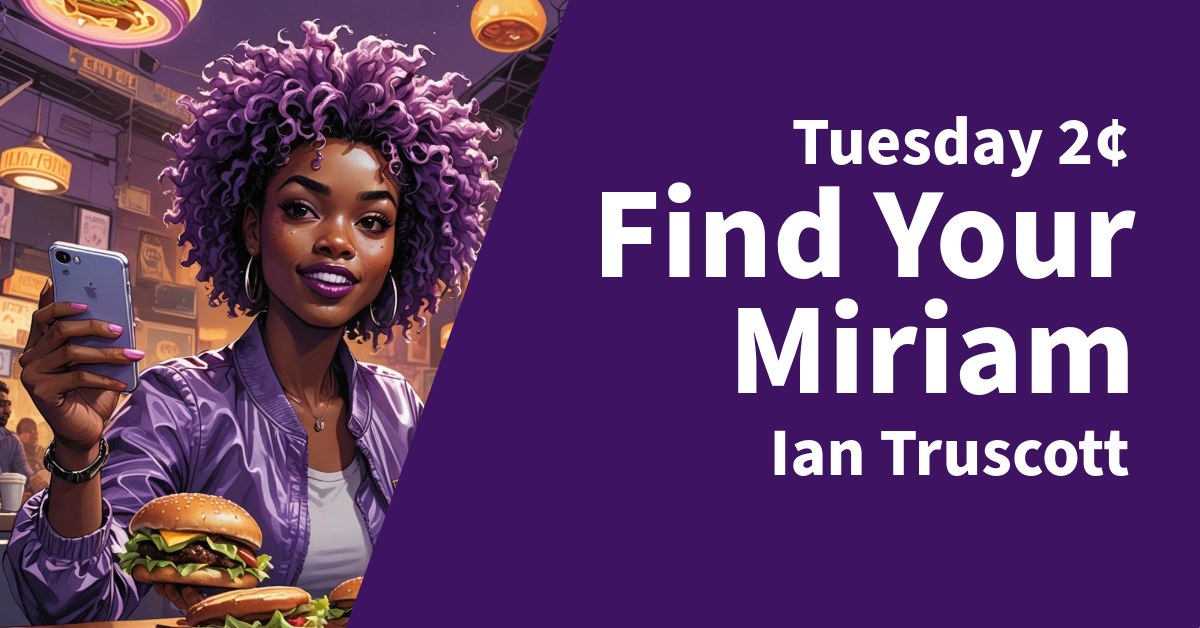This week’s thought is inspired by a hot topic in the marketing news and on one of my favourite podcasts: employee influencer versus Big Fried Chicken Inc. What can we learn in B2B?
On last week’s episode of the “This Old Marketing” podcast, which my chum Robert Rose co-hosts with his chum Joe Pulizzi, they featured a story that created quite a debate.
You’ve probably come across the story. It’s about Chick-fil-A and one of their employees, Miriam Webb (@mirithesiren on TikTok). She had been reviewing menu items on the platform and building a decent following, but the company asked her to stop posting because it was against the company handbook.
Covering this story and the challenge of employees posting on social media, Katie Hicks in Marketing Brew said, “The content is coming from inside the house—and not every company likes it”. I love this line, and it is just as true in B2B as much as in consumer brands.
Most of the story is about the missed opportunity for Chik-fil-A, as it’s also been reported that Miriam was snapped up by rival Shake Shack to review their products.
But the main event for me here is that some employees will post about their work; what should employers do?
Is this a case for HR policies or a marketing opportunity?
This tends to be viewed through the lens of its value to the person doing the posting, balanced with the employer’s management of the brand and the tensions there.
Often, it’s as simple as how much time someone spends on this sort of thing is frowned upon, not just the content they post.
You also hear the same argument about this as you do about giving employees training: “What if they leave?”
The truth often is that if you inhibit an employee, they will leave.
Of course, the scale of Chik-fil-A’s tricky dilemma is probably not something many of us will face in B2B, but nothing can stop an employee from becoming influential in your industry category. It could happen to you.
And it’s not a simple issue.
As a marketer, we have enough people outside pissing into the tent, and there is pressure to manage the brand. But we have moved to a world where employers and clients judge us on our personal brands, even if it’s as simple as a nicely curated LinkedIn presence.
We all have personal brands now. Want to write a book? Never mind the content; you had better have an audience. And, how many prominent bloggers, industry analysts, and consultants do you know have flipped from the likes of their own thing, Forrester or Gartner, to a product marketing/evangelist role at a vendor?
Employers LOVE a personal brand when it’s good for them.
As Shake Shack has done, hiring Miriam.
At this point, I should point out that I do understand that these two things are not the same. Miriam’s role at Chik-Fil-A was not that of an influencer or a member of the marketing team. The commercial relationship and what a company should expect from a restaurant employee differs significantly from the relationship and expectations they would have on a paid influencer.
I have seen a lot of good commentary about employees being an extension of the marketing team, so I’m in the camp of loosening up on this stuff and encouraging it.
There are benefits not just for marketing but also for HR and recruitment.
Someone staking their personal reputation on saying nice things about you, whether it’s a client or employee, is marketing gold.
We never have 100% control of our brands anyway, and if you nurture a colleague to be a category influencer and, at some point, they do leave, there is a fairly good chance that they will look kindly on that encouragement and remain a friendly voice rather than the alternative where they leave disgruntled at being told no.
And if they do leave and that influence you encouraged turns against you, then surely you are resilient enough to handle that?
Because, of course, you are the sort of company that has nurtured other influencers, right?
If doing this requires time and money investment, we consider it like any other marketing motion and have a reasoned conversation based on objectives, goals, outcomes, returns and risk.
We are not going to create employee ambassadors for fun, it’s got to be part of the plan.
OK, so this short thought is running on to be a little more than two cents.
It’s a complex issue.
But I say; find your Miriam.
Fancy more of this?
Subscribe to my Rockstar CMO Newsletter

I’m a 3xCMO, now a marketing strategy advisor and podcast host at Rockstar CMO. Although, I’m not a rock star, but a marketing leader, strategist, content marketer, columnist, speaker, industry watcher, and creator of ART (Awareness, Revenue, and Trust) for the companies I work with. But most of all, I am an enthusiastic tea drinker.
You can find me on LinkedIn, Twitter, or now Threads! – or listen to my weekly podcast at Rockstarcmo.com
The half-baked thoughts shared on this blog may not reflect those of my employer or clients, and if the topic of this article is interesting or you just want to say hello please get in touch.
